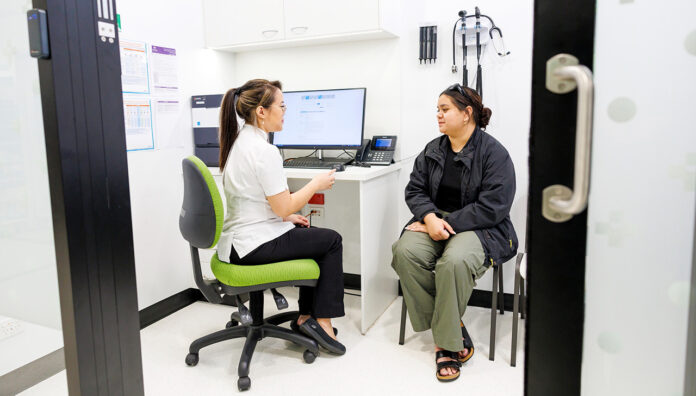For patients undergoing opioid dependence treatment (ODT), long-acting injectable buprenorphine (LAIB) can be a life-changing therapeutic option.
Since 2020, the demand for LAIB has steadily increased, replacing older ODT therapies such as methadone, said John Jones MPS, who administers LAIB in his Shortland, NSW pharmacy.
‘The National Opioid Pharmacotherapy Statistics Annual Data collection shows there is a significant growth trend in that space,’ he said.
But with changes to the ODT program kicking off on 1 July 2023 – including new Pharmaceutical Benefits Scheme (PBS) arrangements only allowing LAIB to be funded through hospital or community pharmacies – pharmacists are likely administering the lion’s share.
To help pharmacists meet this demand, Australian Pharmacist investigates the pros and cons of administering LAIB for both patients and pharmacists, as well as the intricacies of running an efficient LAIB clinic.
What are the key benefits of LAIB?
To access most ODT therapies, such as methadone or buprenorphine and naloxone sublingual films, patients must visit their community pharmacist up to 30 times per month.
But LAIB’s longer dosing intervals means patients need to present much less often – allowing them to fulfil work or childcare responsibilities, or even go on holiday.
LAIB is a stable and predictable medicine, with withdrawal from the medicine reported to be associated with less severe symptoms than cessation of other ODT medicines such as sublingual buprenorphine or methadone.
‘The risk of diversion is also a lot lower and it allows our patients to lead a more normal life,’ said Mr Jones.

The way LAIB is administered also places it squarely in line with other therapies administered in a community pharmacy setting.
‘Patients let the pharmacy assistants know that they are there for their injection, and then they just sit and wait,’ he said. ‘It’s dosed in a private space so patients could be receiving any injection, which helps to remove some of the stigma associated with other forms of opioid replacement.’
Administering LAIB can also mean less paperwork for pharmacists. ‘You don’t have the daily signing out doses that you do with oral forms,’ he said.
However, patient consultations for LAIB can take longer. ‘Because of the longer period between doses, more information needs to be gathered than in a daily appointment, including establishing patient stability,’ said Mr Jones.
Circumstances can also change within monthly intervals, including a decline in mental health. ‘Pharmacists then need to reach out to their wider healthcare team to let them know what has occurred.’
What LAIB options are available?
There are three LAIB products currently available on the PBS under an s100 opioid-dependence listing:
- Buvidal weekly (5–9 day schedule)
- Buvidal monthly (3–5 week schedule)
- Sublocade (26-42 day schedule).
‘Sublocade has a longer dosing interval…. so it can be a better option for fly-in fly-out patients,’ said Mr Jones. “And the expiry at room temperature was just extended from 1 to 3 months”.’
‘But it’s a more challenging dose to administer than Buvidal because it’s a lot thicker, the volume is larger and the gauge of the needles is also larger, so all these factors need to be considered.’
Who is a good candidate for LAIB?
Patients whose work/life commitments don’t fit in with regular dosing would be a good candidate for LAIB, said Mr Jones.
‘While the initiation takes a bit of work, it removes the need to attend each day for dosing,’ he said.
Patients who are stable on buprenorphine and naloxone sublingual films, and certain patients on methadone, are able to transfer to LAIB. Appropriate clinical guidelines must be followed carefully.
In Mr Jones’ view, all pharmacies are well placed to administer LAIB – provided they have a trained vaccinator on staff (read AP’s 2023 article for a detailed explainer on the state and territory regulations around administering LAIB).
‘It’s a very different type of opioid replacement than they may be used to, and the patient demographics tend to be different as well,’ he said. ‘These patients are dealing with and managing their opioid dependence, and they are typically working and looking after kids and/or family.’
What do pharmacists need to know?
For those interested in establishing a LAIB clinic, Mr Jones recommends approaching it much like any other professional service, such as vaccination.
‘Workflow needs, stock, legislation and the booking system all need to be considered,’ he said.
‘You can essentially piggyback on other services – creating a new item called “LAIB injections” and filling in the blanks around that.’
But because LAIB must be injected subcutaneously, with risk of serious harm if injected incorrectly, there are some patients less experienced pharmacists should avoid – at least at the outset.
‘With really skinny patients, it’s challenging to find enough fat to inject it into,’ he said. ‘For example, Buvidal needs to be injected at a 90 degree angle, so with thinner patients this could mean it goes straight into their muscle.’
While administration technique develops with expertise, which can be aided by obtaining some demonstration devices from the manufacturer, Mr Jones recommends picking your patient demographic carefully at the start. ‘Anthropometry is important in that circumstance,’ he added.
Communication to the patient about the professional delivery of the service is also important for those who may have trepidations.
‘Having confidence and providing a bit more context and structure to patients removes some of the concerns potentially attached to other forms of opioid replacement,’ Mr Jones said.
It is essential that LAIB injections are never handled by, or are directly accessible to, patients. Pharmacists must have procedures in place to prevent this, ensuring they are never dispensed directly to the patient or carer.
What are some helpful resources?
Vaccinating pharmacists interested in administering LAIB will be well prepared to do so after attending The pointy end of LAIB workshop at PSA24, led by Mr Jones on Sunday 4 August from 1.30-3.30 pm.
‘There will be some demonstrations of administering LAIB, along with practical examples of how to set up a service, what documentation you need to complete, and other tips about the policies and procedures that need to be considered and put in place,’ he said.
Single day registration to attend PSA24 is also available. But to avoid late fees, it’s essential to book your spot before midnight 25 July. Those unable to make the conference can also complete PSA’s Long-acting injectable buprenorphine (LAIB) administration by pharmacists course.



 Professor Margie Danchin[/caption]
Professor Margie Danchin[/caption]

 Dr Peter Tenni[/caption]
Dr Peter Tenni[/caption]
 How should we deprescribe gabapentinoids, according to the Maudsley Deprescribing Guidelines[/caption]
How should we deprescribe gabapentinoids, according to the Maudsley Deprescribing Guidelines[/caption]



 Pharmacists have always prescribed, but they have the potential to prescribe much more
Pharmacists have always prescribed, but they have the potential to prescribe much more




